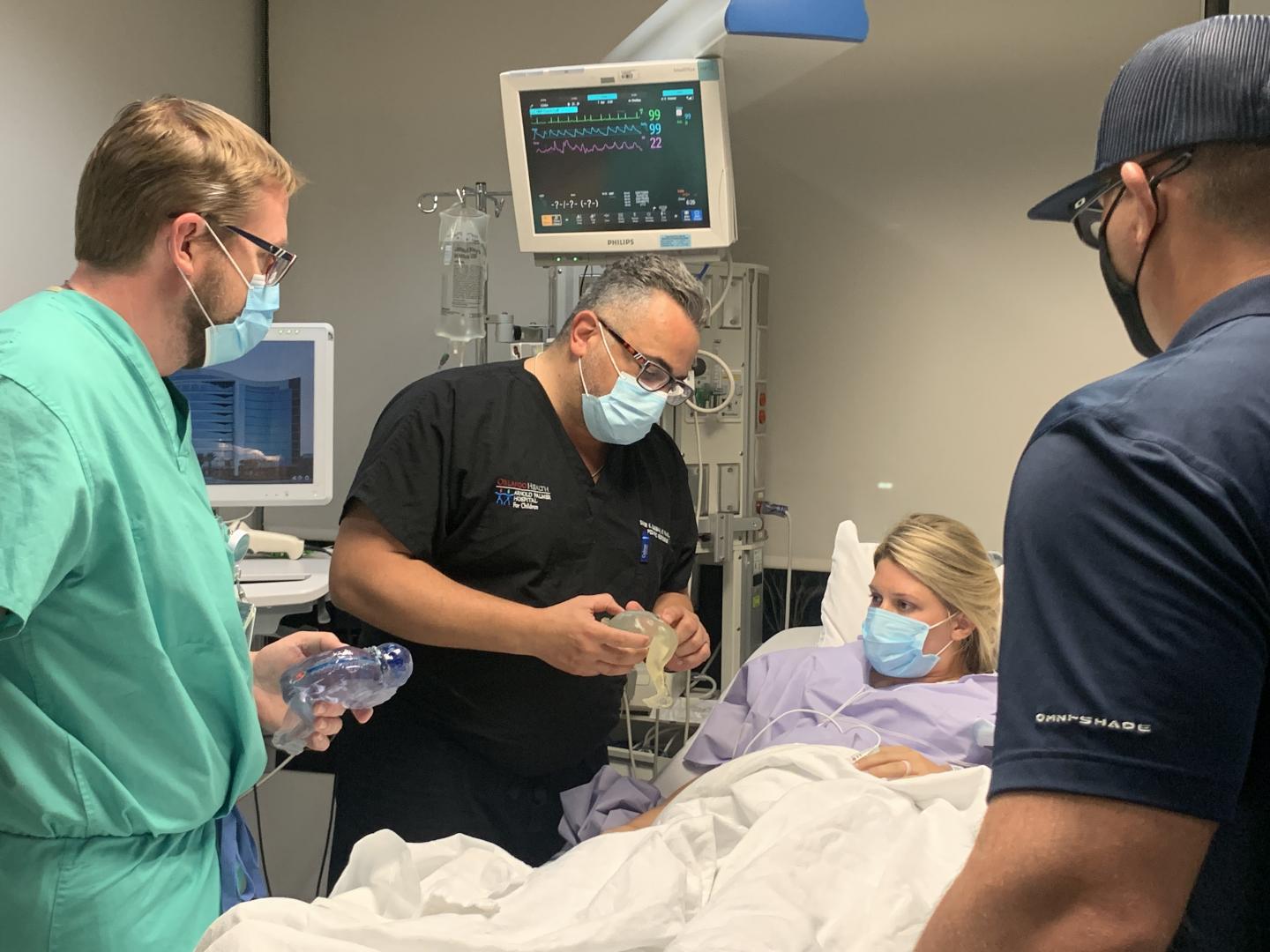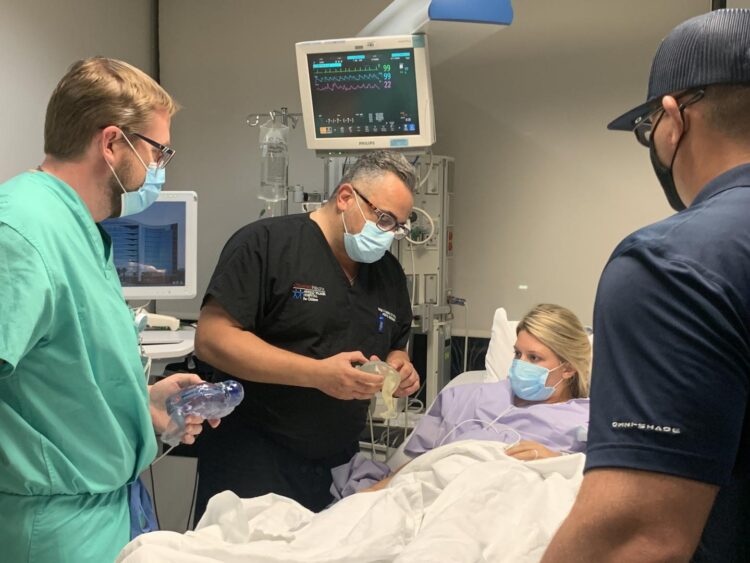New modeling technology allows surgeons to visualize complicated pre-delivery procedure

Credit: Orlando Health
(ORLANDO, Florida) – A state-of-the-art in-utero procedure allows surgeons to correct a birth defect on developing babies inside the womb. But operating on a mother and her unborn child at the same time can be challenging and unpredictable. To give their world-class surgeons even more information ahead of surgery, Orlando Health Winnie Palmer Hospital for Women & Babies is using MRI and ultrasound imaging along with 3D-printing technology to create a first-of-its-kind detailed model that allows surgeons to plan procedures ahead of time, identifying potential obstacles and reducing the risks of surgery.
The models are currently being used to plan for an in-utero surgery that repairs spina bifida, a birth defect that occurs when the spinal cord fails to close normally during development. The condition can cause a lifetime of neurological disabilities, including an inability to walk.
“The 3D reconstruction of the fetus can really educate the surgeon on the real-life shape, size and location of the spinal lesion, as well as prepare the surgeon to have the appropriate equipment ready to treat this condition surgically,” said Samer Elbabaa, MD, medical director of pediatric neurosurgery at Orlando Health. “It’s a level of detail that we are not able to see in traditional imaging, but that is extremely valuable in these cases where we cannot actually see the defect ahead of surgery.”
To create the models, Orlando Health works with the expert 3D printers at Digital Anatomy Simulations for Healthcare, LLC (DASH) who developed the technology. While many have seen crude, single-colored items that have been 3D printed, DASH has taken the process to the next level, developing technology to enhance MRI and ultrasound images taken throughout the pregnancy to reconstruct accurate curves and edges. They are then able to print a high-resolution model with multiple colors and materials, allowing surgeons to see details such as skeletal structure, nerve and vascular anatomy and fluid sacs in the spine and brain caused by spina bifida.
The models are currently being used in the hospital’s open fetal surgery program, which has performed 25 procedures since it began in 2018. Orlando Health is one of only 12 facilities in the U.S., and the only one in Florida, that is able to perform this kind of surgery.
“The fetal models not only help surgeons plan for things like where to make an incision and how to repair the defect, but also helps reduce the duration of the surgery to limit the developing baby’s exposure,” said DASH President and CEO Jack Stubbs. “We are able to create models that are extremely realistic by using a stack of two-dimensional images taken throughout the pregnancy and enhancing them to reconstruct a better visualization of what the fetus truly looks like.”
The 3D-printed models are giving surgeons a clearer picture for what to expect during a fetal surgery and also allowing surgeons to better explain the baby’s condition to parents and show them how it will be treated. For first-time parents Jared and Jocelyn Rodriguez, it made them more confident about moving forward with surgery.
“At first, we just thought it was a model showing the same kind of condition that our baby was diagnosed with, but then Dr. Elbabaa told us that it was made using the 20-week MRI of our daughter,” Jared Rodriguez said. “We could see the brain and the spine and I looked down at it and thought, ‘I’m holding my daughter right now? That’s pretty awesome.'”
The Rodriguezes say although they are prepared for the challenges their daughter may face, they’re glad this technological development is helping to give her a healthier future.
“Every appointment we go to, we just keep getting more good news and she’s already showing how strong she is,” Jocelyn Rodriguez said. “We know that this surgery will give her the best shot at a normal lifestyle and we’re excited to see the positive results as she grows.”
Surgeons are seeing successful results from fetal surgery for spina bifida. Most babies who undergo the procedure experience significantly fewer health concerns and better functionality than those who receive surgery after they’re born, with some of the first patients now learning to walk on their own. Experts hope to expand the program to model other types of birth defects in utero that may be treated through fetal surgery in the future.
###
Media Contact
Ben Roselieb
[email protected]
Original Source
https:/





